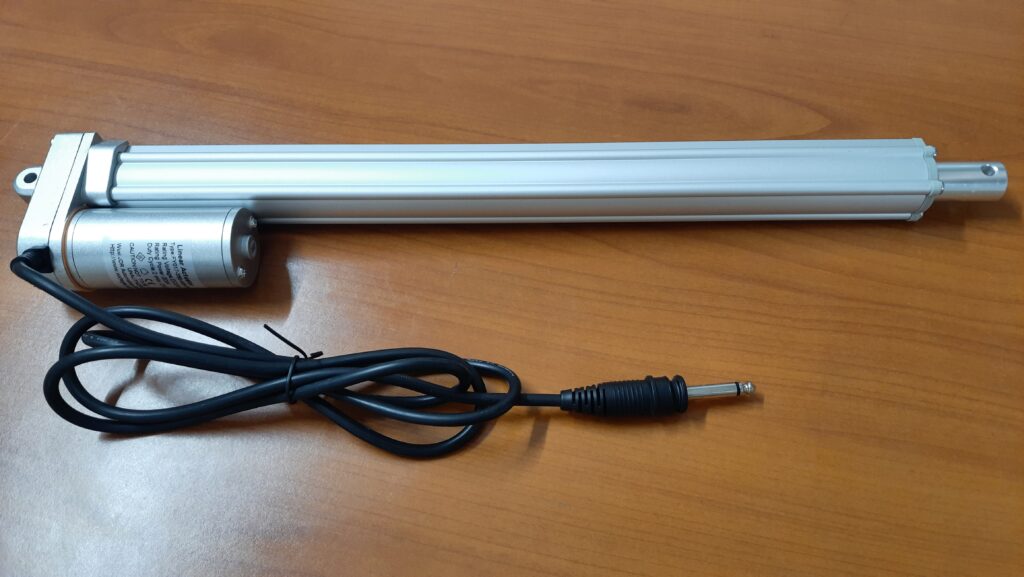Introduction
In the world of manufacturing, injection moulding stands out as a critical process for producing a wide range of plastic products. The efficiency and precision of this process heavily depend on the quality and reliability of the material handling systems employed. Enter the electric linear actuator—a game-changer in modern injection moulding material handling. This blog explores the transformative impact of electric linear actuators on injection moulding, detailing their benefits, applications, and the future of this innovative technology.

What is an Electric Linear Actuator?
An electric linear actuator is a device that converts rotational motion into linear motion, typically powered by an electric motor. These actuators offer precise control over movement, speed, and force, making them ideal for applications requiring high accuracy and repeatability. Unlike their hydraulic or pneumatic counterparts, electric linear actuators are known for their energy efficiency, low maintenance requirements, and clean operation.
The Role of Material Handling in Injection Moulding
Material handling in injection moulding encompasses the movement, storage, control, and protection of materials throughout the manufacturing process. Efficient material handling is crucial for maintaining product quality, reducing waste, and optimizing production times. Key components of material handling in injection moulding include material feeding, conveying, storage, and removal systems.
Advantages of Electric Linear Actuators in Injection Moulding
- Precision and Accuracy : Electric linear actuators provide precise control over the position and movement of materials, ensuring consistent and accurate placement. This precision is critical in injection moulding, where even minor deviations can lead to defects and inconsistencies in the final product.
- Energy Efficiency : Unlike hydraulic systems, electric actuators consume power only when in motion, resulting in significant energy savings. This efficiency translates to lower operational costs and a reduced carbon footprint.
- Low Maintenance : Electric linear actuators have fewer moving parts compared to hydraulic systems, leading to reduced wear and tear. This results in lower maintenance requirements and longer service life, minimizing downtime and maintenance costs.
- Clean Operation : Electric actuators do not require oil or other fluids, eliminating the risk of leaks and contamination. This cleanliness is particularly important in industries where hygiene and product purity are paramount.
- Flexibility and Integration : Electric linear actuators can be easily integrated into automated systems, offering flexibility in design and implementation. They can be programmed for complex movements and synchronized operations, enhancing overall process efficiency.
Applications of Electric Linear Actuators in Injection Moulding Material Handling
- Material Feeding Systems : Electric linear actuators are used to control the movement of raw materials into the injection moulding machine. Their precision ensures a consistent feed rate, which is essential for maintaining the quality of the moulded products.
- Conveying Systems : In automated material handling systems, electric actuators drive conveyors that transport materials between different stages of the injection moulding process. Their reliability and precise control help streamline production and reduce bottlenecks.
- Storage and Retrieval Systems : Electric linear actuators are employed in automated storage and retrieval systems (AS/RS) to manage the storage of raw materials and finished products. Their accuracy ensures optimal use of storage space and quick retrieval times.
- Ejection Systems : After moulding, electric actuators facilitate the ejection of finished products from the mould. Their controlled motion prevents damage to delicate parts and ensures smooth removal, enhancing product quality.
The Future of Electric Linear Actuators in Injection Moulding
As technology advances, the integration of electric linear actuators in injection moulding material handling is expected to grow. Innovations in actuator design, control systems, and materials will further enhance their performance and capabilities. The adoption of Industry 4.0 and smart manufacturing practices will see electric actuators playing a pivotal role in creating highly automated and efficient injection moulding processes.
Conclusion
Electric linear actuators are revolutionizing material handling in injection moulding by offering unmatched precision, energy efficiency, and reliability. Their integration into material handling systems enhances the overall efficiency and quality of the injection moulding process. As the industry continues to evolve, electric linear actuators will undoubtedly remain at the forefront of innovation, driving the future of efficient and sustainable manufacturing.
Embracing this technology not only optimizes production but also contributes to a more sustainable and cost-effective manufacturing environment. With electric linear actuators, the future of injection moulding material handling is not just promising—it is here.
